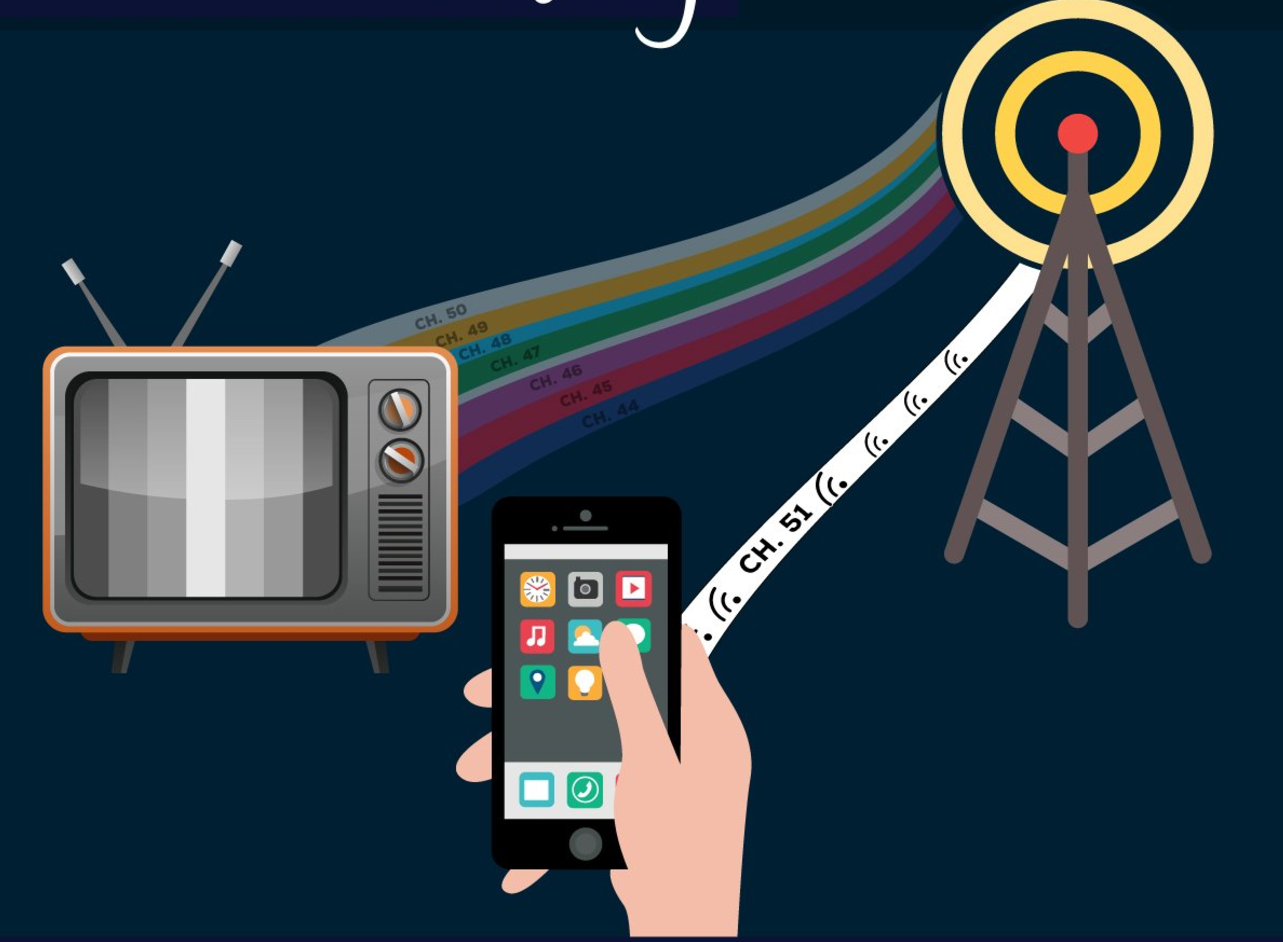In the debate over television white spaces (TVWS), the coveted unused spectrum between television channels, most media outlets have characterized the debate as a head-to-head battle between tech and big broadcasters. However, once you parse through the static, the low power television (LPTV) broadcasters catering to local communities have much to gain from utilizing TVWS for increased broadband access.
Recently, 175 broadcasters sold their licenses back to the Federal Communications Commission (FCC) in a reverse auction to allow the spectrum they use to be repurposed for wireless carriers. To ensure the repurposed spectrum is contiguous and can exist without interference, the FCC has proposed a “repacking” process, which would use sophisticated software to shift the channel frequencies of about 957 broadcasting television stations. Despite early concerns that LPTV would be left behind in this process, the software is now public and the number of stations to be moved is known. Stakeholders have undoubtedly run the program and there have been no indications that reserving an extra TVWS channel would have any impact on LPTV. So, why have large broadcasters, who have exclusive rights to their own channels and remain unaffected by TVWS, opposed the initiative with derisive jokes and dismissive rhetoric?
Static is bad for television, both hindering clarity of content and progress in a dynamic world. Unfortunately, large broadcasters, under the guise of promoting the interests of LPTV, are seeking to undermine the deployment of innovative TVWS, miring its opportunities in static. Not only would TVWS help supply broadband options to rural communities across America, but it would provide an additional avenue—digital airwaves, so to speak—to share content created by local broadcasters with a wider audience. Several LPTV groups are beginning to support the proposal, with one noting, “our coalition fully backs the intent, the design, and the immediacy of the [TVWS] Initiative.”
The promise of expanded airwaves through TVWS-enabled broadband could provide a unique opportunity for content creators and LPTV broadcasters. The LPTV Spectrum Rights Coalition recently pointed out that a Federal Communications Commission (FCC) pilot program enabled several LPTV broadcasters to use their spectrum for wireless internet service. If that program is expanded to LPTV operators more broadly, they could provide either broadcast or internet signals as they see fit. In that case, the only remaining questions for LPTV operators to ask are: Do we want to work with, or against, the nationwide effort to connect rural Americans? And, do we want to reach people via broadcast or through broadcast AND broadband?
Today, only 13 percent of Americans rely on over-the-air (OTA) broadcast signals as their sole means of accessing TV programming. Contrary to wireless broadband, OTA signals come free from your local broadcasters, and are captured using television “rabbit ears” antennas. Coincidentally, just 13 percent of Americans do not use the internet, a number that continues to decrease as internet usage becomes increasingly integral to daily life. The popularity of shows like Sunday Night Football, Big Bang Theory, and Scandal show that Americans love broadcast content, yet more and more prefer to watch it over broadband connections.
LPTV operators have the choice to continue a long tradition of OTA service, or expand their reach using new avenues to find new viewers. If LPTV operators continue using OTA as their only method of distribution, households viewing television content via internet, cable, or satellite are left out of LPTV’s purview. However, TVWS would create avenues to distribute television content via broadband, enabling the LPTV audience to include the 87 percent of Americans who are internet users, as well as new rural communities brought online with television white spaces. As more Americans use connected devices at home and on travel, LPTV operators have a greater opportunity to reach consumers on the app and screen in their pocket, rather than through the antenna attached to their TV.
By not tapping into the innovative potential and reach of TV white spaces, local broadcasters are being held back from the evolution of their business, and prevented from reaching Americans who gather television content via broadband. A backwards-looking view that the airwaves should be reserved for the 13 percent of Americans who view television over the airwaves needlessly limits LPTV operators’ ability to meet customers where they are—online, on their apps, on their connected devices.
